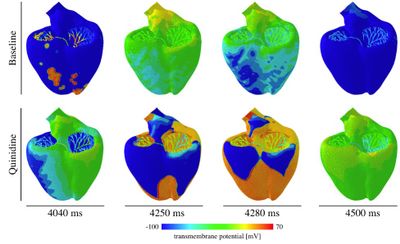 In this video, HPE’s Jean-Luc Assor talk about their involvement in the Living Heart Project – and how HPC is explains how high performance computing is saving lives. The Stanford Living Heart Project is uniting industry-leading researchers, doctors, educators, and technology manufacturers to develop a new standard for drug testing with Hybrid HPC.
In this video, HPE’s Jean-Luc Assor talk about their involvement in the Living Heart Project – and how HPC is explains how high performance computing is saving lives. The Stanford Living Heart Project is uniting industry-leading researchers, doctors, educators, and technology manufacturers to develop a new standard for drug testing with Hybrid HPC.
Imagine creating a treatment plan for a patient on the other side of the world, or testing a drug without ever putting subjects at risk. 3D modeling and simulation tools have opened the door to a new age of healthcare. Operations like the Living Heart Project are uniting industry-leading researchers, educators, and technology manufacturers to reach a higher standard for personalized medicine. Leveraging advanced modeling and simulation capabilities, the Living Heart Project has developed highly accurate, validated models of the human heart which can be personalized by patients’ unique traits and conditions. The Living Heart Project is a growing ecosystem that is fueling the collaborative development of commercially available heart models and exploring novel digital therapies.
Today, life sciences organizations are harnessing modeling and simulation tools backed by the latest HPC innovations to virtually analyze their patients’ health records, plan therapies, and practice surgical procedures. These realistic models will serve as a common technology base for education and training, medical device design, testing, clinical diagnosis, and regulatory science—working to both enhance and accelerate patient care.
Next-generation technology for modern healthcare
The latest Living Heart Project, a study on drug-induced heart arrhythmias, resulted from the cooperation between Stanford University, Dassault Systèmes, UberCloud, Hewlett Packard Enterprise (HPE), and Advania. The collaboration received three prestigious HPC awards during SC17.
The Living Matter Laboratory of Stanford University is now using HPC simulations to study the potentially lethal side effects of drugs—such as heart arrhythmias, which occur when electrical activity in the heart turns chaotic. Utilizing a multi-scale 3D model, researchers can monitor blood circulation and predict the risk of drug-induced arrhythmias, based on a variety of cell types within the tissue. The model allows researchers to assess the response of new drug compounds (like Quinidine – below) quickly and cost-effectively before it is released on the market.




